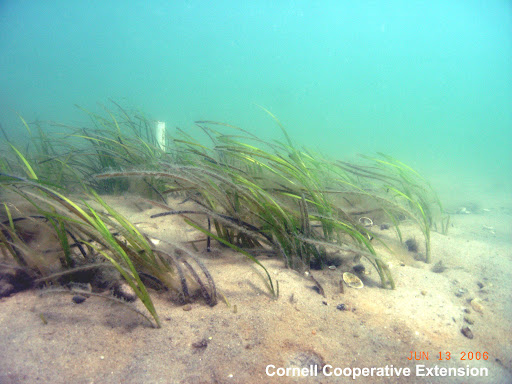 Many mysteries on Earth have first been attributed to creatures like fairies or aliens until we are able to uncover what truly causes the phenomena.
Many mysteries on Earth have first been attributed to creatures like fairies or aliens until we are able to uncover what truly causes the phenomena.
One such mystery has been the formation of eelgrass in the Baltic Sea near Denmark’s island of Møn.
In 2008, tourists noticed that the eelgrass grew in rings, and wondered if there were supernatural forces causing such interesting formations.
How Does Eelgrass Grow?
Eelgrass, a type of seagrass, is a plant that grows in estuaries and in shallow coastal waters. It is extremely important in preserving many coastal ecosystems; its roots are very strong and widespread, stabilizing the seafloor and preventing erosion of shallow coasts. In addition, smaller fishes hide in the eelgrass to avoid predators.
An interesting characteristic of eelgrass is their growing pattern. Eelgrass grows in a radiating pattern of concentric circles. The oldest eelgrass is closer to the center, and the youngest from the outermost circle.
The Culprit: Pollution!
This interesting growth pattern has led to the creation of these “fairy rings.”
Researchers from the University of Southern Denmark tested the soil near the mysterious circles and have found that it is extremely high in sulfide concentration. Sulfide, a toxic substance, seems to be killing the eelgrass. While the younger plants can handle the sulfide, the older plants die. This leaves a zone of dead plants surrounded by a circle of healthy plants - a fairy circle!
While the design of eelgrass circles seems mysterious and beautiful, it reveals an underlying problem - pollution. The sulfide in the soil, in addition to other substances like phosphorus or nitrogen, is most likely a result of runoff from fertilizers and industrial waste. By killing eelgrass, they disrupt ocean ecosystems. The phenomenon of dying seagrass has been noticed worldwide and may prove detrimental to us in the future.
The mystery of the circles may have been solved, but it exposes an even bigger problem that now needs to be solved.
Courtesy: National Geographic






